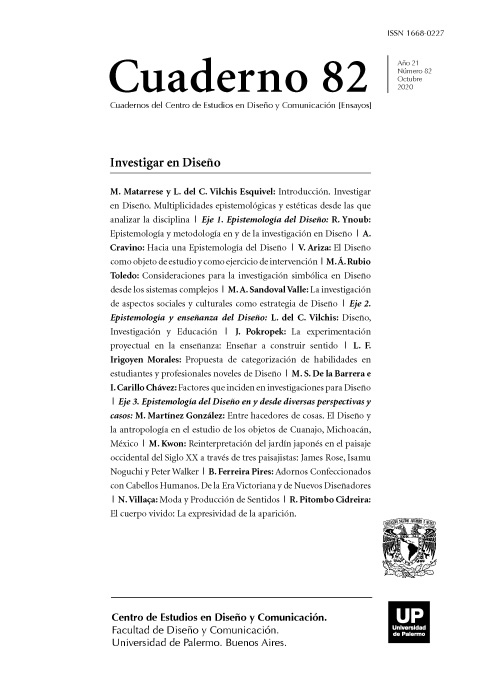Adornos Confeccionados con Cabellos Humanos. De la Era Victoriana y de Nuevos Diseñadores
Abstract
Openly, the Victorian Era imposed mourning on the society; it established black as the official color of mourning clothing, and it introduced to the market the production of ornaments, both residential and for personal use, made of human hair. Such ornaments, made of an organic raw material taken from the body of a dear relative, assured that this one would not be forgotten. Nowadays, this same material is been used by some contemporary jewelry designers. The possibility to use human raw material to make these ornaments, takes place throughout the centuries, because of the changes in the perceptions towards death and how is it represented; how the death body is taken care and buried.
References
Agamben, G. (2006). A Linguagem e a Morte. Belo Horizonte: UFMG.
Ariès, P. (2014). O Homem Diante da Morte. São Paulo: UNESP. Bíblia Sagrada Católica. Versão Digital.
Burke, E. (1993). Uma Investigação Filosófica sobre a Origem de nossas Idéias do Sublime e do Belo. Campinas: Papirus.
Chevalier, J. e Gheerbrant, A (2002). Dicionário de Símbolos. Rio de Janeiro: José Olympio. Grande Dicionário Houaiss da Língua Portuguesa. Versão Digital.
Huizinga, J. (2010). O Outono da Idade Média. São Paulo: Cosac Naify.
Pastoureau, M. (2011). Preto - A História de uma Cor. São Paulo: SENAC.
Pires, B. F. (2005). O Corpo como Suporte da Arte - Piercing, Implante, Escarificação, Tatuagem. São Paulo: SENAC.
Schimitt, J. (2010). Mortes Vitorianas. São Paulo: Alameda.
Los autores/as que publiquen en esta revista ceden los derechos de autor y de publicación a "Cuadernos del Centro de Estudios de Diseño y Comunicación", Aceptando el registro de su trabajo bajo una licencia de atribución de Creative Commons, que permite a terceros utilizar lo publicado siempre que de el crédito pertinente a los autores y a esta revista.


